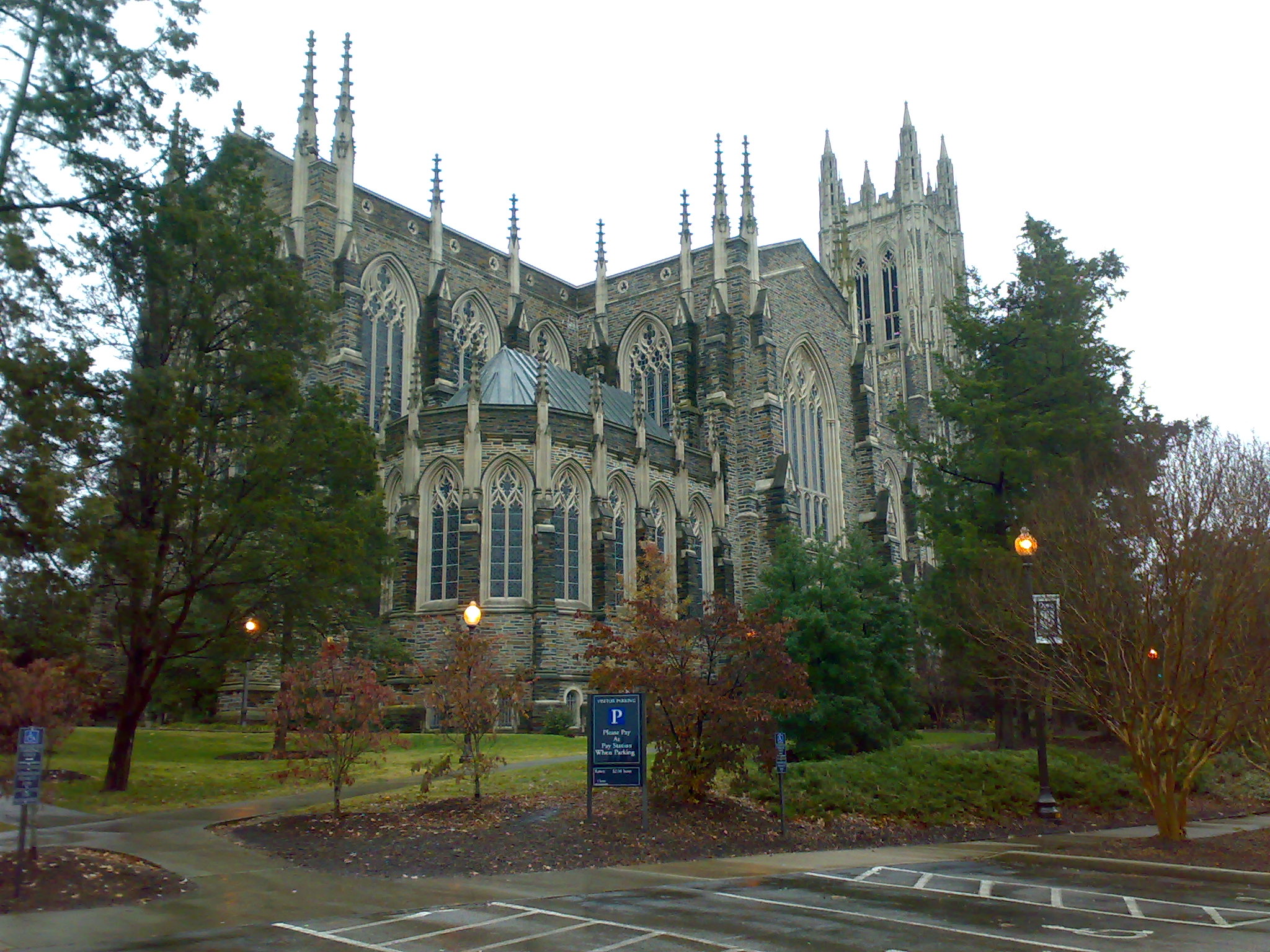A STCC engineering student and his father spoke to me recently
about transfer to a four-year engineering program. (I should explain that STCC teaches the first
two years of a standard engineering curriculum preparing students such as this
one to complete at a baccalaureate school.)
We talked about transfer choices and then the conversation turned to the
cost of college. The father explained he
had four children that he wanted to send to college. The only way that he thought he could afford
to do so was by first sending them to a local community college and then have
each transfer as juniors to a public or private four-year school.
 |
| Goodson Chapel, Duke University Divinity School. Source:Wikipedia |
Moreover, according to NPR, Jim Roberts, Duke’s executive vice provost, claims that the yearly cost of educating a student at Duke is $90,000. While it is difficult to ascertain the validity of Roberts’ assertion, both of these numbers should shock the typical parent in the US where the median family income is $51,000.
In fact, the Gallup poll on money worries for middle age Americans 30 to 49 lists paying for one's children’s college just behind not
having enough money for retirement and not being able to pay for medical costs
in the event of a serious illness or accident. (59% worry about cost of
college, 68% retirement and 63% medical costs)
Public colleges and universities were designed to provide a less expensive alternative than the private higher education institutions. But even here, the great recession of 2008 has forced public institutions to raise prices dramatically to make up for cuts in state funding. For example, the flagship public university in my state, the Amherst campus of the University of Massachusetts, charged $23,258 in 2013-14 consisting of $13,258 in tuition and $10,439 in room and board. While these numbers are small compared with Duke’s, tuition alone is more than a quarter of median US family income.
Community colleges with relatively low tuition costs are
perhaps the only alternative to many families. At STCC cost of attendance is $5100
per year, about 40% of tuition at UMass/Amherst, and a small fraction of a
private school like Duke. As US middle class
income stagnates and college costs inexorably rise, enrolling at a community
college and proving oneself academically has become a much more attractive path
to a college degree.




